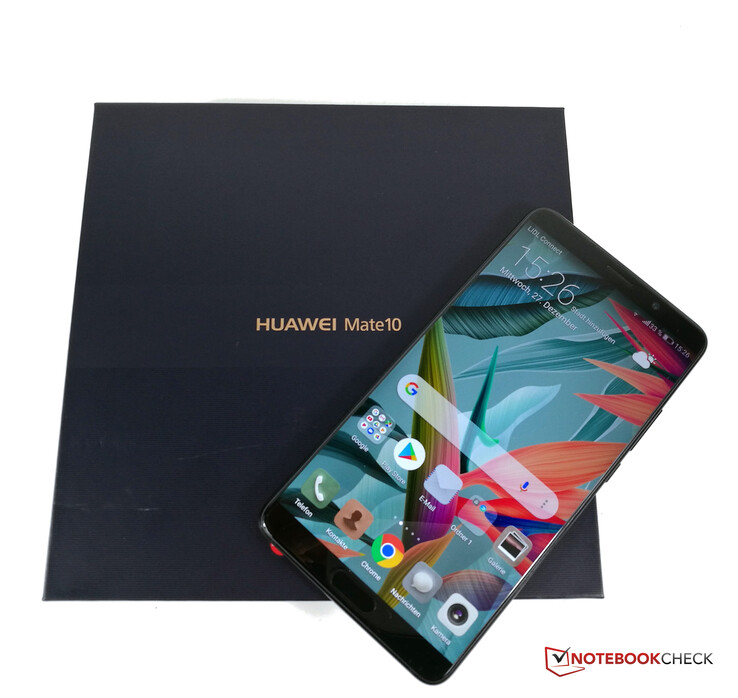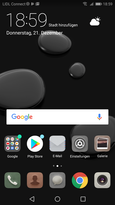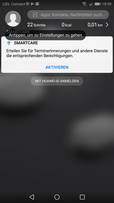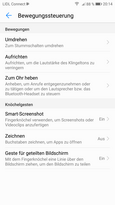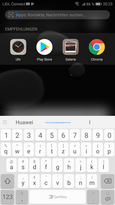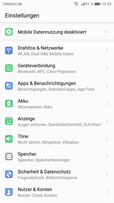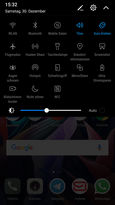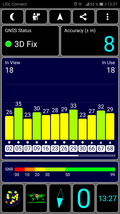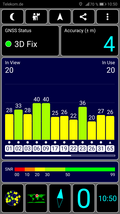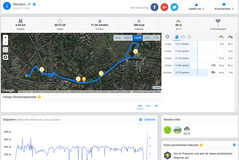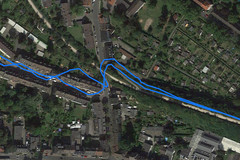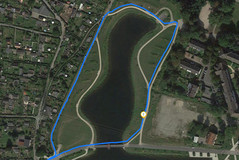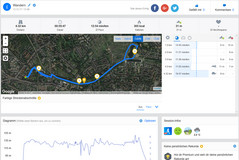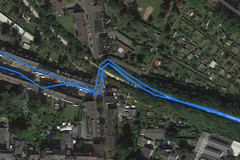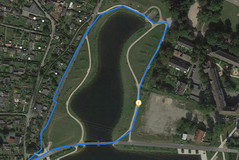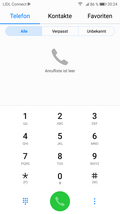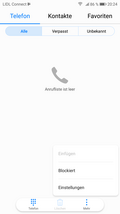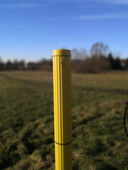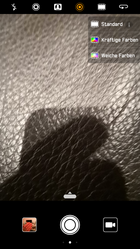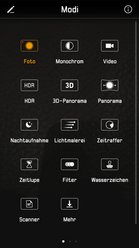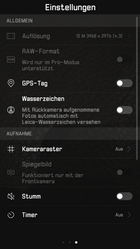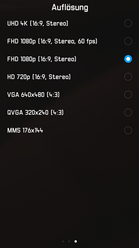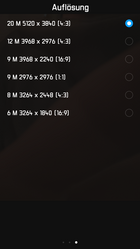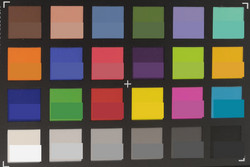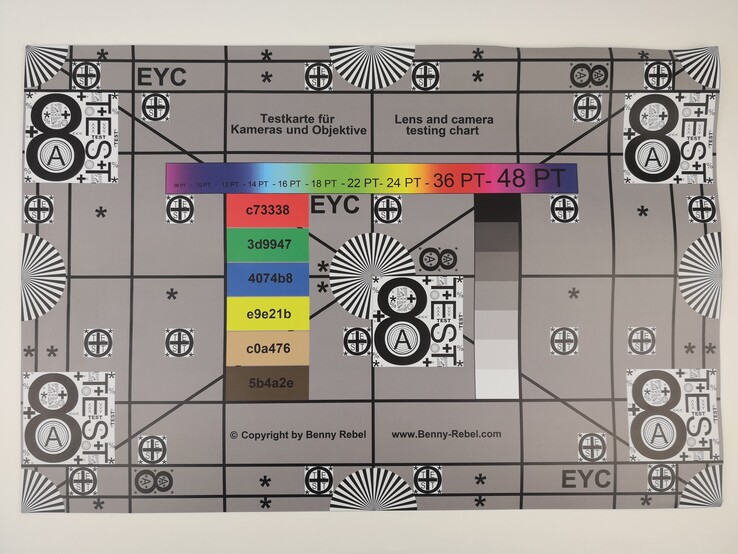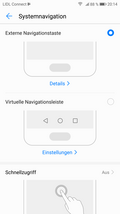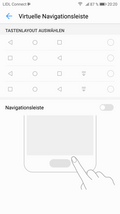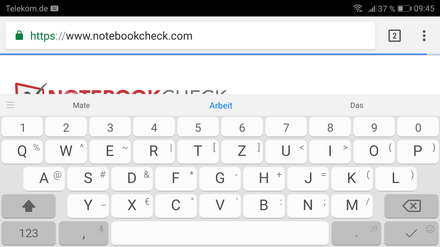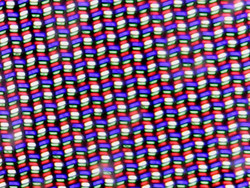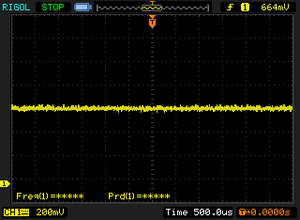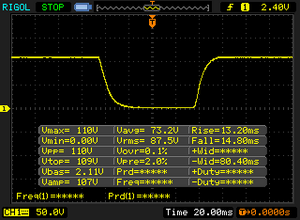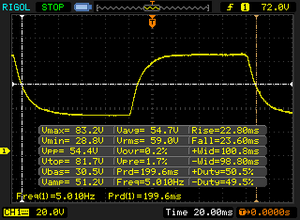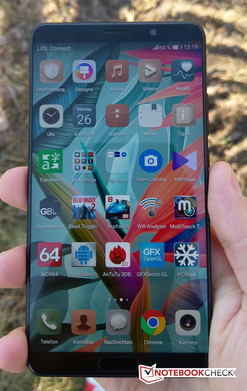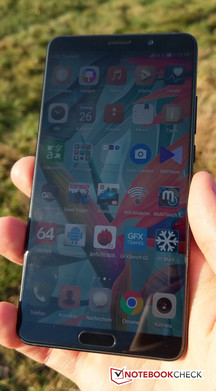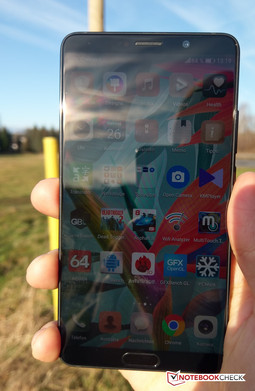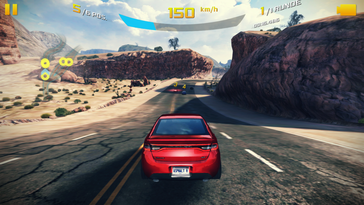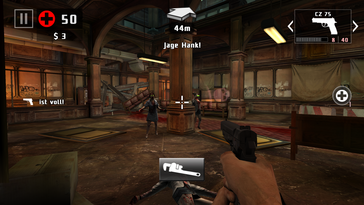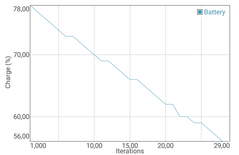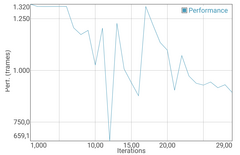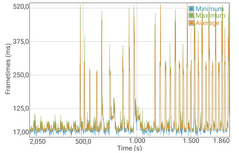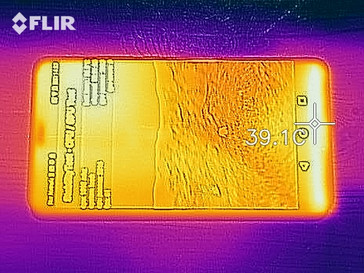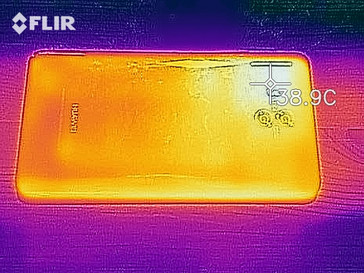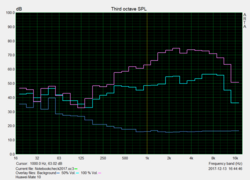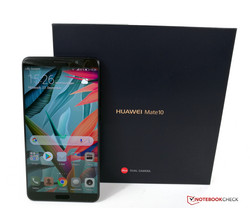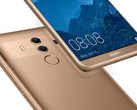Huawei Mate 10 Smartphone Review
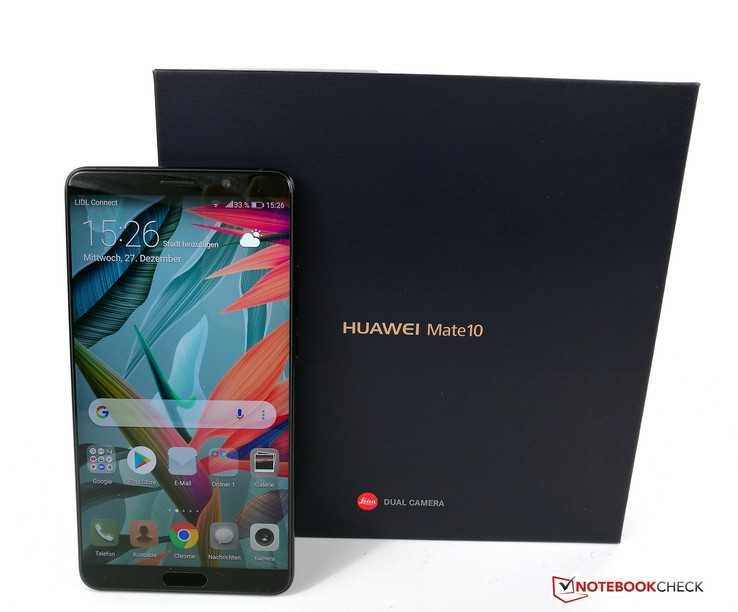
In October of 2017, Huawei introduced the Mate 10 series – including the Huawei Mate 10 Pro and the Huawei Mate 10 Lite - to the German market. The “normal” Mate 10, however, is not available from German retailers - at least not yet. Those interested in the phablet thus have to import it themselves.
Just like the Pro-version, the Mate 10 makes use of Huawei’s own Kirin 970 processor, which is manufactured using a 10 nm process and not only offers much better performance, but also better efficiency compared to the predecessor-SoC Kirin 960. Even though the battery capacity of 4000 mAh has not changed, Huawei promises that the new Mate 10 lasts up to 30 percent longer on a charge.
Unlike the pro-version, however, the Mate 10 features a 5.9-inch IPS panel with a 16:9 aspect ratio and a resolution of 2560x1440 pixels as well as a fingerprint reader in the front. With the Mate 10 Pro, the Chinese manufacturer has decided to skip the regular headphone jack for the first time and includes a USB-C headset instead. The “normal” Mate 10 still has the 3.5 mm jack however, and also supports MicroSD cards for storage expansion, which the Pro doesn't.
The regular Mate 10 comes with 4 GB of RAM and either 32 or 64 GB of flash storage. At the time of writing, an import into Germany will cost about 500 Euros (~$600), while the model with 64 GB costs about 550 Euros (~$660). A version with 6 GB of RAM and 128 GB flash drive can be purchased for about 600 Euros (~$720). Users who want to avoid importing their smartphone from the Far East can actually purchase the Mate 10 abroad (in Spain), although the price then approaches the MSRP of 700 Euros ($840).
The Mate 10 is without any real competition, as other high-end 6-inch devices such as the Huawei Mate 10 Pro, LG V30 or Google Pixel 2 XL are more comparable to a stretched 5.5-inch smartphone since they feature a 2:1 aspect ratio. Only the displays of the Samsung Galaxy Note 8 and to some extend that of the Samsung Galaxy S8 Plus are about as wide as that of the Mate 10. The 5.7-inch HTC U Ultra with its secondary display in the front also features a 16:9 aspect ratio and could be considered an inexpensive alternative.
Case
Huawei uses 2.5 D Corning Gorilla Glass 5, which curves at the edges before it transitions into the metal frame of the chassis. The bezel of the 5.9-inch IPS display is very narrow indeed and the borders at the top and on the bottom are also very narrow. As a result, the screen-to-body ratio is an outstandingly low 82 percent.
Because of the very narrow borders, the slim (8 mm/~0.31 in) case – which is protected against dust and spraying water according to IP53 standard – can be held very comfortably. The Mate 10’s case is smaller than that of the Mate 9, but that does not mean that the smartphone lends itself to one-handed operation all that well. Swiping across the navigation bar does activate one-handed mode, which shrinks the screen content.
As with the front, the curved back is also made out of glass. The Mate 10 is available in Mocha Brown, Pink Gold, Black, and Champagne Gold. Given the price point, both the build quality as well as the material selection are top notch. There is not much to criticize, although the buttons for the volume control on the right edge are a bit too wobbly for our liking. The buttons are pleasantly firm, however.
Connectivity
Our review smartphone is equipped with 64 GB of UFS 2.1 storage, of which 52 GB is available to the user. Storage can be expanded with a MicroSD card at the expense of the dual-SIM functionality. The integrated microSD card reader works with the current standards SDHC and SDXC and can accept cards up to a capacity of 256 GB.
The USB Type-C charge port works at USB 3.0 speeds and supports USB OTG for external storage devices as well. Even though the back is made of glass, the Mate 10 does not support wireless charging. Instead, Huawei employs their Super Charge Technology to charge the internal 4000 mAh battery.
Other features consist of the notification LEDs, an infrared remote and a fingerprint reader. Miracast – so the wireless connection to an external monitor or TV - is supported as well. In addition, the USB-C port can also transmit DisplayPort (1.2) signals.
Software
As always, Huawei uses their own EMUI (Emotion User Interface), which is now based on the current Google Android version 8.0. While the Chinese import version does not support Google services such as the Play Store or applications such as Gmail, the global version of the Mate 10 does not suffer from the same restraints and also includes other system languages aside from Chinese and English (including German).
In other aspects, the EMUI version remains essentially unchanged from that of the Pro-version of the Mate 10 available in Germany. Most third-party applications such as Facebook or Instagram can be uninstalled if so desired. With the phablet connected to an external monitor, the Android Desktop mode launches, which is comparable to Samsung’s DeX – but without the need for an additional docking station.
Our review smartphone is up-to-date as far as the security patches are concerned (updates are from November 2017).
Communication and GPS
There are not any major differences between the regular Mate 10 and the Pro-version when it comes to the communication capabilities. The WLAN module supports IEEE 802.11 standards a/b/g/n/ac on both the 2.4 and the 5.0 GHz bands. Bluetooth version 4.2 and NFC are also on board.
The signal attenuation is very low at -27 dBm in close proximity to our Telecom router (Speedport W921V). The transfer speeds between the smartphone and our reference router Linksys EA8500 are good, but cannot quite compare to Samsung's smartphones or the LG V30. All in all, however, the recorded speeds still exceed those of the Huawei Mate 10 Pro.
For the first time, the Mate-10-series supports LTE Cat 16, which allows a maximum theoretical connection speed of 1 Gbit/s. The smartphone also has dual Nano SIM card slots, both of which support VoLTE. Neither slot is therefore limited to just UMTS. The number of supported frequencies is also quite good. Even though we got our phone through an import company, the Mate 10 supports LTE band 20 (800 MHz), which is important in the more rural areas in Germany.
The integrated navigation module supports BeiDou, GLONASS and GPS. Satellites are acquired reasonably fast outdoors with an accuracy of about 4 meters (~13 ft). Even indoors, the signal strength is quite decent and good enough to establish the location within 8 meters (~26 ft).
For our real-world test, we compare the recorded distances between the smartphone and the professional bike computer Garmin Edge 500. For our 5 km (~3.1 mi) test track, the Huawei Mate 10 shows a deviation of about 120 meters (~394 ft), which is low enough to not hamper navigation significantly. A closer look at the GPS track reveals higher inaccuracies, especially when turning corners.
Telephone Functions and Voice Quality
The voice quality is quite decent. We did not encounter any dropouts or had any issues with the reception during the test period; voices are rendered clearly and are thus easy to understand. The integrated microphone is decent as well and our conversation partner at the other end could understand us without any difficulties.
Cameras
Both rear-facing camera modules – optimized by the German company Leica - are capable of delivering very high-quality photos, although there is still room for improvement when it comes to the software. In bright conditions, the 12 MP RGB and 20 MP monochrome sensors deliver pictures with lots of details and good sharpness. The dynamic range is also quite outstanding. When taking photos of people, however, the results often appear artificial, since skin areas in particular look almost as if they have been “improved” with a beauty filter. In addition, the software applies substantial amounts of sharpening.
Thanks to the large aperture of f/1.6, the Mate 10 can take decent photos even under low light conditions. The recorded brightness is sufficient, but in terms of sharpness or image noise the smartphone cannot quite compare to the Galaxy S8/Note or the Pixel 2.
Videos can be recorded at up to Ultra HD resolution (3840x2160 pixels) at 30 FPS. The quality is outstanding in Full HD and Ultra HD at 30 FPS, but when recording in Full HD at 60 FPS, the videos are much darker with higher amounts of noise. Small movements and camera shake are compensated, thanks to the integrated OIS.
The CMOS sensor of the front-facing camera has a resolution of 8 MP and a maximum aperture of f/2.0. The quality of selfies is good as long as there is ample light. Unfortunately, there is no autofocus to ensure maximum sharpness. Videos can be recorded at up to 30 FPS at a Full HD resolution (1920x1080 pixels).
As always, we check the color capabilities of our review smartphones under controlled conditions. The Mate 10 does a decent job here, but the photos of the X-Rite ColorChecker Passport (no post-processing applied) reveal a white balance which is much too warm. To get an idea of the sharpness, we take pictures of our test chart under controlled artificial lighting. The sharpness is very good, but there is a noticeable softness, particularly at the lower edges.
Accessories and Warranty
The box includes the phone itself as well as a quick start guide in Chinese, a modular power adapter and the USB cable. Huawei also includes a transparent sleeve made out of plastic, and headphones.
Our supplier TradingShenzhen adds an EU plug adapter free of charge.
A 12-month warranty covers the Mate 10 against manufacturer’s defects, but in Germany, Huawei does not offer repairs for devices purchased in non-EU countries. If the smartphone is purchased in Germany (via EBay, for example), the German “Gewährleistung” (coverage for 2 years) still applies, however.
Alternatively, TradingShenzhen also warrants the smartphone for 12 months as long as a German contact address is supplied. Please see our Guarantees, Return Policies and Warranties FAQ for country-specific information.
Input Devices & Operation
The display can recognize up to 10 fingers simultaneously. The capacitive multi-touch display reacts promptly and reliably even at the very edges, while the Corning Gorilla Glass allows the fingers to glide smoothly.
Since the bezel is very narrow, the fingerprint reader located on the front is actually positioned quite low on the display, but the biometric unlocking feature works quite well. In typical Huawei fashion, the sensor not only functions reliably, but also unlocks the phone very quickly.
The familiar onscreen buttons in the lower third of the display are used for navigation. Alternatively, the user can hide the buttons to navigate the Android OS using the fingerprint-sensitive area. Long-pressing the touch-sensitive home button underneath the display takes the user to the homescreen, while a short press opens the previous screen. A side swipe over the sensor opens up the multi-tasking view. Navigating the Mate 10 is quite easy after a brief adjustment period.
For text inputs, the Mate 10 comes with the SwiftKey keyboard preinstalled.
Display
Unlike the predecessor, the new Mate 10 features a 5.9-inch IPS display with QHD resolution (2560x1440 pixels). The default is 1080p though, so getting to the higher pixel density (almost 500 PPI) requires changing the corresponding setting. With only 402 PPI, even the higher-end Pro-version trails its sibling when it comes to the pixel density. The screen content is supremely sharp and the large display makes reading text a joy. The maximum brightness of 458 cd/m² is just decent, but with the brightness sensor enabled, the panel brightness jumps to 716 cd/m².
The brightness distribution is also quite even at 94 percent. The more relevant APL50 measurement - which simulates an even distribution of light and dark areas on the display – results in a still very respectable 653 cd/m².
Like many other manufacturers, Huawei uses a context-aware automatic brightness control. Depending on the scenario - surfing the web using the Chrome browser, for example - the Mate 10 automatically adjusts the brightness. This "feature" can be quite annoying at times, but turning it off in the menu system is unfortunately impossible.
| |||||||||||||||||||||||||
Brightness Distribution: 94 %
Center on Battery: 704 cd/m²
Contrast: 2514:1 (Black: 0.28 cd/m²)
ΔE ColorChecker Calman: 2.4 | ∀{0.5-29.43 Ø4.78}
ΔE Greyscale Calman: 2.8 | ∀{0.09-98 Ø5}
Gamma: 2.34
CCT: 6423 K
| Huawei Mate 10 IPS, 2560x1440, 5.9" | Huawei Mate 9 IPS, 1920x1080, 5.9" | Huawei Mate 10 Pro OLED, 2160x1080, 6" | HTC U Ultra SLCD 5, 2560x1440, 5.7" | Samsung Galaxy Note 8 Super AMOLED, 2960x1440, 6.3" | Samsung Galaxy S8 Plus Super AMOLED, 2960x1440, 6.2" | LG V30 OLED, 2880x1440, 6" | Google Pixel 2 XL P-OLED, 2880x1440, 6" | |
|---|---|---|---|---|---|---|---|---|
| Screen | -45% | 6% | -69% | -12% | 9% | -58% | -20% | |
| Brightness middle (cd/m²) | 704 | 696 -1% | 629 -11% | 470 -33% | 530 -25% | 560 -20% | 432 -39% | 415 -41% |
| Brightness (cd/m²) | 692 | 680 -2% | 636 -8% | 445 -36% | 536 -23% | 562 -19% | 428 -38% | 420 -39% |
| Brightness Distribution (%) | 94 | 93 -1% | 94 0% | 88 -6% | 93 -1% | 93 -1% | 87 -7% | 87 -7% |
| Black Level * (cd/m²) | 0.28 | 0.42 -50% | 0.22 21% | |||||
| Contrast (:1) | 2514 | 1657 -34% | 2136 -15% | |||||
| Colorchecker dE 2000 * | 2.4 | 4.3 -79% | 1.7 29% | 5.5 -129% | 2.6 -8% | 1.7 29% | 4.18 -74% | 2.7 -13% |
| Colorchecker dE 2000 max. * | 4.2 | 9.4 -124% | 3.6 14% | 11.9 -183% | 5.1 -21% | 3.4 19% | 8.53 -103% | 4.3 -2% |
| Greyscale dE 2000 * | 2.8 | 4.8 -71% | 2.4 14% | 7.6 -171% | 2.7 4% | 1.6 43% | 5.3 -89% | 3.3 -18% |
| Gamma | 2.34 94% | 2.33 94% | 2.15 102% | 2.2 100% | 2.04 108% | 2.13 103% | 2.33 94% | 2.36 93% |
| CCT | 6423 101% | 7255 90% | 6337 103% | 7454 87% | 6206 105% | 6435 101% | 7487 87% | 6787 96% |
| Color Space (Percent of AdobeRGB 1998) (%) | 81.57 | |||||||
| Color Space (Percent of sRGB) (%) | 99.87 |
* ... smaller is better
Screen Flickering / PWM (Pulse-Width Modulation)
| Screen flickering / PWM not detected | |||
In comparison: 53 % of all tested devices do not use PWM to dim the display. If PWM was detected, an average of 8108 (minimum: 5 - maximum: 343500) Hz was measured. | |||
The black value of 0.28 cd/m² and the contrast ratio of 2514:1 are very good as well, although the APL50-measurements show slightly lower values (black value 0.3 cd/m²; 2173:1). Of course, smartphones based on OLED-technology still have a significant advantage since they can display “true” black, which in turn means a theoretically unlimited contrast ratio. Compared to the predecessor, Huawei has improved the display significantly.
Our analysis with a photospectrometer and the software CalMAN shows comparatively low DeltaE deviations for color (2.4) and grayscale (2.8) for the sRGB color space (mode: warm). Ideally, these values should be <3, so the Mate 10 does well here. The color temperature of 6423K is also very close to the ideal of 6500K and the sRGB coverage is almost 100 percent.
With the “vivid” mode active, there is a slight color cast and the DeltaE deviation for colors and grayscale are slightly worse. In addition, the saturation is higher as well.
Display Response Times
| ↔ Response Time Black to White | ||
|---|---|---|
| 28 ms ... rise ↗ and fall ↘ combined | ↗ 13.2 ms rise | |
| ↘ 14.8 ms fall | ||
| The screen shows relatively slow response rates in our tests and may be too slow for gamers. In comparison, all tested devices range from 0.1 (minimum) to 240 (maximum) ms. » 70 % of all devices are better. This means that the measured response time is worse than the average of all tested devices (20.2 ms). | ||
| ↔ Response Time 50% Grey to 80% Grey | ||
| 46.4 ms ... rise ↗ and fall ↘ combined | ↗ 22.8 ms rise | |
| ↘ 23.6 ms fall | ||
| The screen shows slow response rates in our tests and will be unsatisfactory for gamers. In comparison, all tested devices range from 0.165 (minimum) to 636 (maximum) ms. » 80 % of all devices are better. This means that the measured response time is worse than the average of all tested devices (31.6 ms). | ||
Performance
The HiSilicon Kirin 970 is one of the highest-performing 10 nm SoCs on the market. The ARM-based processor was developed in-house and features eight cores. The high-end chip integrates four ARM Cortex A73 cores (running at up to 2.4 GHz) and four Cortex A53 cores (which top out at 1.8 GHz) using the “big.LITTLE” computing architecture. The graphics card is courtesy of the integrated and very powerful twelve-core GPU ARM Mali G72 GPU (MP12).
The Mate 10 delivers great overall performance with no slowdowns or hiccups, even during heavy multitasking sessions. Thanks mainly to the extremely fast flash storage – one of the fastest ones on the market - applications open and close rapidly.
The results of the synthetic benchmark tests are also outstanding. Even when tasked with graphic-intensive benchmarks, the integrated GPU performs extremely well and ties its sibling Huawei Mate 10 Pro, which features a lower-resolution display.
| AnTuTu v6 - Total Score (sort by value) | |
| Huawei Mate 10 | |
| Huawei Mate 9 | |
| Huawei Mate 10 Pro | |
| HTC U Ultra | |
| Samsung Galaxy Note 8 | |
| Samsung Galaxy S8 Plus | |
| LG V30 | |
| Google Pixel 2 XL | |
| PCMark for Android | |
| Work performance score (sort by value) | |
| Huawei Mate 10 | |
| Huawei Mate 9 | |
| Huawei Mate 10 Pro | |
| HTC U Ultra | |
| Samsung Galaxy Note 8 | |
| Samsung Galaxy S8 Plus | |
| LG V30 | |
| Google Pixel 2 XL | |
| Work 2.0 performance score (sort by value) | |
| Huawei Mate 10 | |
| Huawei Mate 9 | |
| Huawei Mate 10 Pro | |
| HTC U Ultra | |
| Samsung Galaxy Note 8 | |
| Samsung Galaxy S8 Plus | |
| LG V30 | |
| Google Pixel 2 XL | |
| Geekbench 4.4 | |
| 64 Bit Single-Core Score (sort by value) | |
| Huawei Mate 10 | |
| Huawei Mate 9 | |
| Huawei Mate 10 Pro | |
| Samsung Galaxy Note 8 | |
| Samsung Galaxy S8 Plus | |
| LG V30 | |
| Google Pixel 2 XL | |
| 64 Bit Multi-Core Score (sort by value) | |
| Huawei Mate 10 | |
| Huawei Mate 9 | |
| Huawei Mate 10 Pro | |
| Samsung Galaxy Note 8 | |
| Samsung Galaxy S8 Plus | |
| LG V30 | |
| Google Pixel 2 XL | |
| GFXBench (DX / GLBenchmark) 2.7 | |
| T-Rex Onscreen (sort by value) | |
| Huawei Mate 10 | |
| Huawei Mate 9 | |
| Huawei Mate 10 Pro | |
| HTC U Ultra | |
| Samsung Galaxy Note 8 | |
| Samsung Galaxy S8 Plus | |
| LG V30 | |
| Google Pixel 2 XL | |
| 1920x1080 T-Rex Offscreen (sort by value) | |
| Huawei Mate 10 | |
| Huawei Mate 9 | |
| Huawei Mate 10 Pro | |
| HTC U Ultra | |
| Samsung Galaxy Note 8 | |
| Samsung Galaxy S8 Plus | |
| LG V30 | |
| Google Pixel 2 XL | |
| GFXBench 3.0 | |
| on screen Manhattan Onscreen OGL (sort by value) | |
| Huawei Mate 10 | |
| Huawei Mate 9 | |
| Huawei Mate 10 Pro | |
| HTC U Ultra | |
| Samsung Galaxy Note 8 | |
| Samsung Galaxy S8 Plus | |
| LG V30 | |
| Google Pixel 2 XL | |
| 1920x1080 1080p Manhattan Offscreen (sort by value) | |
| Huawei Mate 10 | |
| Huawei Mate 9 | |
| Huawei Mate 10 Pro | |
| HTC U Ultra | |
| Samsung Galaxy Note 8 | |
| Samsung Galaxy S8 Plus | |
| LG V30 | |
| Google Pixel 2 XL | |
| GFXBench 3.1 | |
| on screen Manhattan ES 3.1 Onscreen (sort by value) | |
| Huawei Mate 10 | |
| Huawei Mate 9 | |
| Huawei Mate 10 Pro | |
| HTC U Ultra | |
| Samsung Galaxy Note 8 | |
| Samsung Galaxy S8 Plus | |
| LG V30 | |
| Google Pixel 2 XL | |
| 1920x1080 Manhattan ES 3.1 Offscreen (sort by value) | |
| Huawei Mate 10 | |
| Huawei Mate 9 | |
| Huawei Mate 10 Pro | |
| HTC U Ultra | |
| Samsung Galaxy Note 8 | |
| Samsung Galaxy S8 Plus | |
| LG V30 | |
| Google Pixel 2 XL | |
When running various browser benchmarks, the Mate 10 also holds its own and ranks towards the top of the field. Subjectively, the browser performance is very decent, even when loading demanding pages.
| JetStream 1.1 - Total Score | |
| Samsung Galaxy Note 8 (Samsung Browser 6.0) | |
| Huawei Mate 9 (Chrome 54) | |
| Google Pixel 2 XL (Chrome 62) | |
| Samsung Galaxy S8 Plus (Samsung Browser 5.2) | |
| Huawei Mate 10 (Chrome Version 63) | |
| Huawei Mate 10 Pro (Chrome 61) | |
| LG V30 (Chrome 62) | |
| HTC U Ultra (Chrome 56) | |
| Octane V2 - Total Score | |
| Samsung Galaxy S8 Plus (Samsung Browser 5.2) | |
| Samsung Galaxy Note 8 (Samsung Browser 6.0) | |
| Huawei Mate 9 (Chrome 54) | |
| Google Pixel 2 XL (Chrome 62) | |
| Huawei Mate 10 (Chrome Version 63) | |
| LG V30 (Chrome 62) | |
| Huawei Mate 10 Pro (Chrome 61) | |
| HTC U Ultra (Chrome 56) | |
| Mozilla Kraken 1.1 - Total | |
| HTC U Ultra (Chrome 56) | |
| Huawei Mate 10 (Chrome Version 63) | |
| LG V30 (Chrome 62) | |
| Huawei Mate 10 Pro (Chrome 61) | |
| Google Pixel 2 XL (Chrome 62) | |
| Huawei Mate 9 (Chrome 54) | |
| Samsung Galaxy S8 Plus (Samsung Browser 5.2) | |
| Samsung Galaxy Note 8 (Samsung Browser 6.0) | |
| WebXPRT 2015 - Overall | |
| Google Pixel 2 XL (Chrome 62) | |
| Samsung Galaxy Note 8 (Samsung Browser 6.0) | |
| Huawei Mate 10 Pro (Chrome 61) | |
| Huawei Mate 10 (Chrome Version 63) | |
| Samsung Galaxy S8 Plus (Samsung Browser 5.2) | |
| Huawei Mate 9 (Chrome 54) | |
| LG V30 (Chrome 62) | |
* ... smaller is better
With read and write rates of 81 MB/s and 63 MB/s, respectively, the performance of the integrated microSD card reader is more than satisfactory and comparable to competing high-end smartphones. As always, we use our reference card Toshiba Exceria Pro M501 (maximum read 270 MB/s, maximum write 150 MB/s) for our test.
| Huawei Mate 10 | Huawei Mate 9 | Huawei Mate 10 Pro | HTC U Ultra | Samsung Galaxy Note 8 | Samsung Galaxy S8 Plus | LG V30 | Google Pixel 2 XL | |
|---|---|---|---|---|---|---|---|---|
| AndroBench 3-5 | -46% | 8% | -32% | -22% | -23% | -35% | -22% | |
| Sequential Read 256KB (MB/s) | 790 | 594 -25% | 732 -7% | 423.9 -46% | 797 1% | 788 0% | 669 -15% | 760 -4% |
| Sequential Write 256KB (MB/s) | 201.7 | 142.9 -29% | 208.7 3% | 164.7 -18% | 205.9 2% | 194.2 -4% | 193.2 -4% | 195.3 -3% |
| Random Read 4KB (MB/s) | 169.7 | 94.7 -44% | 132.3 -22% | 84.2 -50% | 122.5 -28% | 127.2 -25% | 78.2 -54% | 170.6 1% |
| Random Write 4KB (MB/s) | 105.3 | 8.77 -92% | 164.4 56% | 13.7 -87% | 14.55 -86% | 15.27 -85% | 10.21 -90% | 17.84 -83% |
| Sequential Read 256KB SDCard (MB/s) | 80.6 ? | 54 ? -33% | 82.8 ? 3% | 67.9 ? -16% | 71.1 ? -12% | 62.8 -22% | ||
| Sequential Write 256KB SDCard (MB/s) | 62.9 ? | 29.53 ? -53% | 67.6 ? 7% | 59.3 ? -6% | 57.2 ? -9% | 47.2 -25% |
Gaming
The graphics card Mali G72 (MP12) is integrated into the HiSilicon Kirin SoC and is based on the second-generation Bifrost architecture. Graphically demanding titles from the Android Play Store, such as the racing game “Asphalt 8: Airborne” or the FPS game “Dead Trigger 2” are no problem for the Mate 10 and run without any stutters. The load times are also pleasantly short. During our gaming tests, the phablet achieved frame rates of 29 and 30 FPS, respectively.
Controlling the action via the touchscreen and the position sensor works flawlessly.
| Asphalt 8: Airborne | |||
| Settings | Value | ||
| high | 29 fps | ||
| very low | 30 fps | ||
| Dead Trigger 2 | |||
| Settings | Value | ||
| high | 30 fps | ||
Emissions
Temperature
While under load, the temperatures on the back and the front of the smartphone are not even - some areas get hotter than others. We measured a maximum of 35 °C (~95 °F) in the front; the back gets marginally warmer and reaches 36 °C (~97 °F). During normal operation, the smartphone does not get nearly as warm, however.
To check for throttling under maximum load, we run the Battery Test portion of GFXBench, which renders the same sequence 30 times in a row. The frame rates fluctuate noticeably by up to 50 percent. Short drops in performance under load are therefore likely to occur.
(+) The maximum temperature on the upper side is 35.3 °C / 96 F, compared to the average of 35.2 °C / 95 F, ranging from 21.9 to 247 °C for the class Smartphone.
(+) The bottom heats up to a maximum of 35.8 °C / 96 F, compared to the average of 34 °C / 93 F
(+) In idle usage, the average temperature for the upper side is 25.7 °C / 78 F, compared to the device average of 32.9 °C / 91 F.
Speakers
The Mate 10 comes with two speakers - one behind the earpiece, the other one is located on the bottom edge. The audible range is well balanced, but since the front speaker is fairly small, the stereo effect is not very pronounced. While the speaker above the display is not quite loud enough and predominantly emphasizes the highs, the one at the bottom is louder and punchier. The maximum volume could be a tad louder though.
With the included headphones plugged in, the volume is loud enough, but the quality of both the sound as well as the earphones is just average and in no way comparable to the superb output of HTC USonic headphones.
Huawei Mate 10 audio analysis
(+) | speakers can play relatively loud (83.2 dB)
Bass 100 - 315 Hz
(-) | nearly no bass - on average 21% lower than median
(±) | linearity of bass is average (10% delta to prev. frequency)
Mids 400 - 2000 Hz
(+) | balanced mids - only 4.5% away from median
(±) | linearity of mids is average (7.1% delta to prev. frequency)
Highs 2 - 16 kHz
(±) | higher highs - on average 9.1% higher than median
(+) | highs are linear (4% delta to prev. frequency)
Overall 100 - 16.000 Hz
(±) | linearity of overall sound is average (23% difference to median)
Compared to same class
» 51% of all tested devices in this class were better, 7% similar, 42% worse
» The best had a delta of 11%, average was 35%, worst was 134%
Compared to all devices tested
» 68% of all tested devices were better, 6% similar, 27% worse
» The best had a delta of 4%, average was 24%, worst was 134%
HTC U Ultra audio analysis
(+) | speakers can play relatively loud (86 dB)
Bass 100 - 315 Hz
(-) | nearly no bass - on average 27.3% lower than median
(±) | linearity of bass is average (10.1% delta to prev. frequency)
Mids 400 - 2000 Hz
(+) | balanced mids - only 4.4% away from median
(+) | mids are linear (6.6% delta to prev. frequency)
Highs 2 - 16 kHz
(±) | higher highs - on average 12.1% higher than median
(+) | highs are linear (6.3% delta to prev. frequency)
Overall 100 - 16.000 Hz
(±) | linearity of overall sound is average (29% difference to median)
Compared to same class
» 76% of all tested devices in this class were better, 3% similar, 21% worse
» The best had a delta of 11%, average was 35%, worst was 134%
Compared to all devices tested
» 87% of all tested devices were better, 2% similar, 11% worse
» The best had a delta of 4%, average was 24%, worst was 134%
Google Pixel 2 XL audio analysis
(+) | speakers can play relatively loud (88.4 dB)
Bass 100 - 315 Hz
(-) | nearly no bass - on average 28.1% lower than median
(±) | linearity of bass is average (9.5% delta to prev. frequency)
Mids 400 - 2000 Hz
(+) | balanced mids - only 3.2% away from median
(+) | mids are linear (5.5% delta to prev. frequency)
Highs 2 - 16 kHz
(+) | balanced highs - only 3.1% away from median
(+) | highs are linear (4.2% delta to prev. frequency)
Overall 100 - 16.000 Hz
(±) | linearity of overall sound is average (19.6% difference to median)
Compared to same class
» 29% of all tested devices in this class were better, 8% similar, 63% worse
» The best had a delta of 11%, average was 35%, worst was 134%
Compared to all devices tested
» 48% of all tested devices were better, 7% similar, 44% worse
» The best had a delta of 4%, average was 24%, worst was 134%
Frequency diagram in comparison (check boxes can be turned on/off)
Battery Runtime
Power Consumption
Because of the larger and higher-resolution display, the Mate 10 is not exactly energy efficient when compared to the Pro version. Especially at higher load levels, Huawei's smartphone consumes more power than its competitors.
| Off / Standby | |
| Idle | |
| Load |
|
Key:
min: | |
| Huawei Mate 10 4000 mAh | Huawei Mate 9 4000 mAh | Huawei Mate 10 Pro 4000 mAh | HTC U Ultra 3000 mAh | Samsung Galaxy Note 8 3300 mAh | Samsung Galaxy S8 Plus 3500 mAh | LG V30 3300 mAh | Google Pixel 2 XL 3520 mAh | |
|---|---|---|---|---|---|---|---|---|
| Power Consumption | 6% | 25% | -11% | 28% | 35% | 29% | 6% | |
| Idle Minimum * (Watt) | 0.89 | 0.78 12% | 0.85 4% | 1 -12% | 0.73 18% | 0.68 24% | 0.72 19% | 1.28 -44% |
| Idle Average * (Watt) | 2.31 | 2.13 8% | 1.15 50% | 2.41 -4% | 1.44 38% | 1.13 51% | 1.37 41% | 1.87 19% |
| Idle Maximum * (Watt) | 2.38 | 2.17 9% | 1.23 48% | 2.46 -3% | 1.53 36% | 1.16 51% | 1.41 41% | 1.89 21% |
| Load Average * (Watt) | 4.87 | 6.32 -30% | 4.12 15% | 6.8 -40% | 4.56 6% | 4.69 4% | 3.46 29% | 3.73 23% |
| Load Maximum * (Watt) | 9.16 | 6.49 29% | 8.42 8% | 8.9 3% | 5.09 44% | 5.24 43% | 7.83 15% | 8.08 12% |
* ... smaller is better
Battery Life
The Mate 10 is equipped with a 4000 mAh battery and delivers impressive performance during the WLAN test with the display set to 150 cd/m². Even though the power draw is quite high, the phablet lasts almost 14.5 hours before we had to plug it back in. The observed inefficiencies (save for the stress test at maximum load) simply do not translate to everyday use.
The Super Charge technology fully charges the Mate 10 at up to 22.5 W (5 V, 2 A; 4.5 V, 5.0 A; 5 V, 4.5 A) in about 1.5 hours.
| Huawei Mate 10 4000 mAh | Huawei Mate 9 4000 mAh | Huawei Mate 10 Pro 4000 mAh | HTC U Ultra 3000 mAh | Samsung Galaxy Note 8 3300 mAh | Samsung Galaxy S8 Plus 3500 mAh | LG V30 3300 mAh | Google Pixel 2 XL 3520 mAh | |
|---|---|---|---|---|---|---|---|---|
| Battery runtime | -10% | 11% | -25% | -29% | -10% | -2% | -12% | |
| Reader / Idle (h) | 27.9 | 25.6 -8% | 29.1 4% | 26.1 -6% | 18.9 -32% | 26.1 -6% | 31.9 14% | 28.4 2% |
| H.264 (h) | 16.7 | 15.8 -5% | 15.5 -7% | 10.1 -40% | 11 -34% | 12.4 -26% | 13.7 -18% | 11.2 -33% |
| WiFi v1.3 (h) | 14.4 | 12.6 -12% | 13.6 -6% | 9.1 -37% | 7.9 -45% | 12.3 -15% | 12.9 -10% | 9.7 -33% |
| Load (h) | 4.3 | 3.7 -14% | 6.6 53% | 3.6 -16% | 4.1 -5% | 4.6 7% | 4.5 5% | 5 16% |
Pros
Cons
Verdict
The Huawei Mate 10 is an outstanding smartphone. The few minor quibbles – the (in our case at least) wobbly volume rocker switch, the lack of an IP 67 certification, the context-based brightness adjustment, the post-processing of the photos – do not really detract from the overall concept.
The “regular” Mate 10 is undoubtedly the legitimate successor of the popular Mate 9. As one of the outstanding successes of 2017, the smartphone is certainly worthy of consideration - despite the fact that it’s not officially available in Germany.
We have to admit that we struggle to understand why Huawei has decided not to sell the regular Mate 10 in Germany and many other countries. The phablet has a few advantages over the Pro-version: the Mate 10 comes with a 3.5 mm headphone check, features QHD resolution, and allows for storage expansion using SD cards. As such, it should appeal to a broader range of users. Thanks to the 16:9 display ratio, the 6-inch phablet is a true alternative in the high-end segment.
Huawei Mate 10
- 01/02/2018 v6 (old)
Marcus Herbrich




